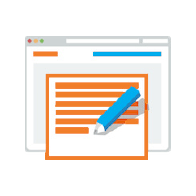Musika Quick Stats
24 Years
Since We Started
41,456+
Happy Customers
10,769
Cities with Students
3,123
Teachers in Network
Lesson Special - Up to 20% OFF! Get Started Now with a Risk-Free Trial!
Here are just a few of the many teachers offering Piano lessons in Pasadena . Whether you are looking for beginner guitar lessons for your kids, or are an adult wanting to improve your skills, the instructors in our network are ready to help you now!
Instruments: Piano
I use different curriculums: 5-6 years old- Music for Little Mozarts 6 years old and older- Piano Adventures by N. and R. Faber/ Alfreds Premier Piano Course/Russian Course by Nikolaev Older beginners - I use different curriculum according student abilities and interests. I use suplemental material: Classics and Piano arrangements of Jazz.& Blues. Read More
Instruments: Piano Trumpet Trombone Saxophone Flute Clarinet Drums Bass Guitar Ukulele Mallet Percussion Orchestral Percussion
As a drummer that has played in all kinds of styles and venues, I can teach any skill level from the first time picking up sticks to making good drummers great and great drummers legendary. Using my experience as a school band director (4 years), I am also able to teach concert band instruments (trumpet, flute, trombone, etc.) as well as Jazz ensemble instruments (drum set, electric bass). In the short time I have been with my current school, we have been awarded 3 awards: one for best in class, one for superior rating, and one band of distinction. Read More
Instruments: Piano Voice Trumpet
I was always able to sing. I started piano in the 5th grade. I played trumpet in high school and made all state band 3 years in a row. I attended college at Houston Baptist University where I received a full scholarship to study music. Once I graduated I was immediately hired to do a national tour which was followed by 5 others. I perform on Broadway also. I was in 22 performances at Theater Under the Stars in Houston. Read More
Instruments: Piano Voice Synthesizer Keyboard
I have been offering group and private piano classes specialized in teaching beginners(both children and adults) using Mayron Cole's Piano Method for 10+ years in my home studio. I started first by teaching kindermusik for babies and toddlers in a neighborhood church location and a music studio in the Copperfield area, then I opened my home studio in 2004 by offering group keyboarding lessons for many young beginners. Motivating students to progress and gain a passion for using their voice and learning the instrument as music lovers is my life long passion. Read More
Instruments: Piano Guitar Voice Classical Guitar
For beginning students I use the Bastien System. For Adults, I use The Alfred Adult beginner for Piano Lessons. I try to adapt the method to the skill of the student, which incorporates my own system, based on years of teaching. I teach according to the student;s skill, and at their own pace. I sometimes use the Trinity College of Music, london, syllabus. Classes consist of warming up exercises, then the student works on the music assigned and the Instructor gives it a grade. Read More
Instruments: Piano
Originally from South Korea, I've been here in the states for 6 years now. I just came here two weeks ago from Little Rock, Arkansas. I'm an undergraduate BAmusic major in pianoat UALR (University of Arkansas at Little Rock).I started playing the piano at 7 years old. When I was in university, I had master classes by Artspress guest artists Nikita Mndoyants and Di Wu, and Dmitry Alexeev, as well as being known at an Arkansas Symphony Orchestra guest pianist. Read More
Instruments: Flute Piccolo
When did you decide to become a professional musician? Was it a gradual decision or was there a defining moment for you?
I decided at a very young age that I wanted to pursue music professionally and I never changed my mind. I learned to play flute in fifth grade and by middle school I knew I wanted to do this for a career. 28 years later I still haven’t changed my mind.
Does music run in your family? Tell us a little about your musical family members.
I do have a few musical family members. I have an aunt who played piano, organ, oboe and Clarinet and a grandmother who played flute and piano. I am the only one in my family who pursed music professionally.
What is your dream piece to perform and why?
I would love to perform the Franck Sonata which was originally written for Violin, the Strauss Sonata which was also originally written for Violin and Chant de Linos for Flute and Piano written by Jolivet.
If you weren't a musician what do you think you'd be doing instead?
If I weren’t a musician I think I would still be working in the Arts field. I probably would have studied Arts Administration or Entertainment Law and focused on assisting musicians with collective bargaining agreements and mediation.
What is your favorite style/genre of music to play and why?
I really enjoy playing in pit orchestras for theater productions. I have been fortunate to play for shows like Les Miserables, Beauty and the Beast, The Wiz, Once on this Island, Sister Act, Into the Woods, Pippin, Camelot and King and I
What does a normal practice session look like for you?
During a normal practice session for me I like to spend 20-30 minutes warming up with long tones to really get my body, breath and tone focused for work. Then I like to spend 20-30 minutes doing some technique work either through various exercises or etudes. From there I would go into working on whatever flute repertoire I am learning at the time.
If you have a Music Degree, what is it in (Performance, Education, Musicology, Theory, Composition, etc) and why did you choose that degree?
I have a Master of Music in Flute Performance and a Bachelor of Music in Flute Performance. I chose these degrees because I love the performing aspect of flute playing. I love being able to share the great works of the flute repertoire with an audience. Performing brings me a lot of joy and satisfaction.
Do you use specific teaching methods or books? (Ex: Alfred, Bastion, Suzuki, Hal Leonard) Why did you choose them if you did?
I have a few different teaching methods that I like to use. I generally choose them based on each student individually. My go to method is the Flute 101 series written by Patricia George. I think she does a great job of giving beginning flutists a strong start with the basics of the instrument.
What do you think is the hardest thing to master on your instrument?
I think the hardest thing for most beginners on flute is breathing. As flutists we loose a lot of our air out of the sides of our mouth because we blow across the tone hole instead of in it. Because of this many beginners find learning how to control their air stream difficult.
Have any of your students won awards or been selected for special honors? How have they succeeded?
My students have been selected for District honor band and All-State Band, received college scholarships in music, received superior ratings at our district solo and ensemble festival and often hold the principal chair in their school’s band program. They succeed because of their strong work ethic and dedicated practice. They also set musical goals for themselves and consistently do the work to achieve their desired results.
24 Years
Since We Started
41,456+
Happy Customers
10,769
Cities with Students
3,123
Teachers in Network
Trusted as the industry leader, for over 21 years the teachers in our network have been providing Piano lessons in Pasadena to students of all ages and abilities.
We'll then reach out to the teachers for you.
Schedule the risk-free trial lesson directly with the teacher.
Continue with that teacher or try someone else.







